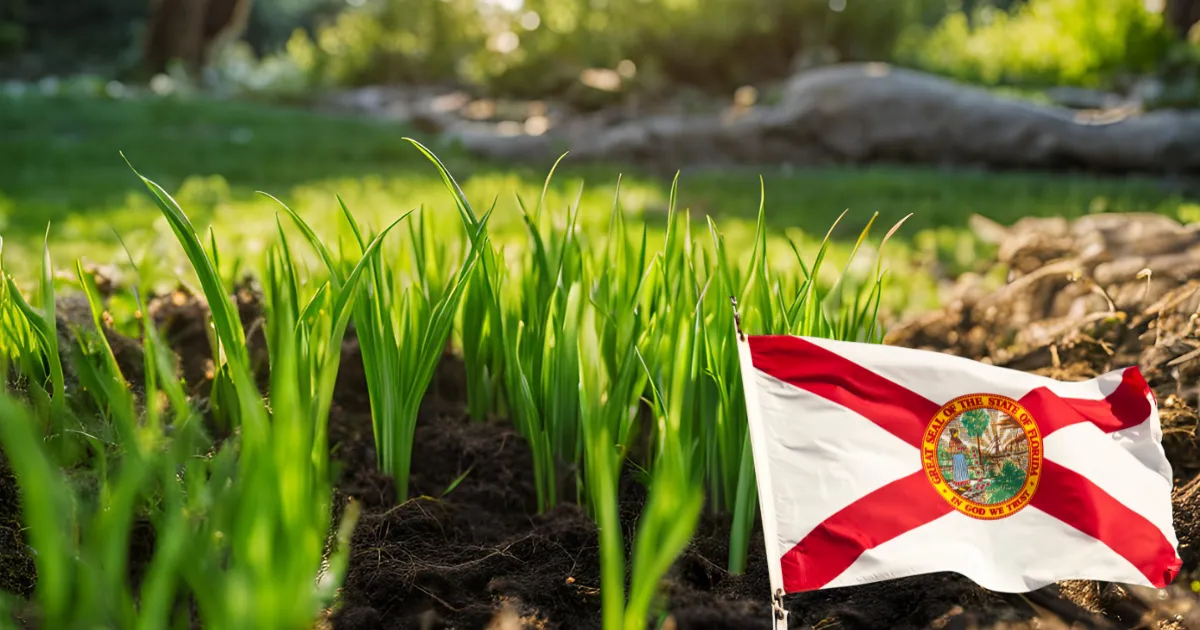
How to Grow Grass in Florida 🌴🌱
Growing grass in Florida presents its own unique set of challenges, but it can also be incredibly rewarding when you see a lush, vibrant lawn thriving under that distinctive tropical sunshine. I remember the first time I tried to establish a lawn in Florida after moving down from a cooler climate. I was full of assumptions that turned out to be misguided. I thought I could treat the lawn the same way I did up north, toss some seed around, water it now and then, and trust the consistent warmth would do the trick.
The reality, of course, was much more nuanced. Florida’s subtropical or tropical climate, depending on where you are in the state, comes with high humidity, intense sun, unpredictable downpours in the summer wet season, and mild but often dry winters. Learning to grow grass here means selecting the right variety that can handle all these conditions, preparing the soil so that the roots have plenty of room to thrive, watering and fertilizing with precision, and staying vigilant against weeds, pests, and diseases that love the same environment your grass does.
1. Choosing the Right Grass Variety
Warm-season turfgrasses dominate in Florida, with several popular options:
- St. Augustinegrass: Handles heat, humidity, and shade but requires more water and maintenance. Watch out for chinch bugs.
- Bahiagrass: Drought-tolerant and low-maintenance, though less lush than St. Augustine.
- Zoysiagrass: Dense, attractive, and drought-tolerant but slower to establish.
- Bermuda grass: Durable and fast-growing, ideal for high-traffic areas like sports fields but requires frequent mowing.
Research these options and consult local extension offices or nurseries for recommendations based on your region’s climate and maintenance preferences.
2. Soil Preparation
Florida’s soils range from sandy coastal types to richer inland varieties. To prepare your soil:
- Test the Soil: Determine pH and nutrient levels. Florida grasses prefer a slightly acidic to neutral pH (5.5–7).
- Amend the Soil: Add compost to improve sandy soil structure, retain moisture, and provide nutrients.
- Till the Soil: Incorporate organic matter into the top 6 inches for better root development.
This foundation is critical for long-term lawn health.
3. Planting Methods: Seed, Sod, or Sprig?
- Seeding: Limited to certain grasses like Bahiagrass. Follow the recommended seeding rate to avoid patchiness.
- Sodding: Ideal for St. Augustine and other varieties that don’t seed well. Lay sod pieces tightly together, press firmly into the soil, and water immediately.
- Sprigging or Plugging: A cost-effective alternative to sod for slow-growing varieties like Zoysiagrass. Requires more time and care to establish.
4. Watering with Precision
Watering correctly is essential in Florida’s climate:
- Initial Watering: Keep soil consistently moist for the first few weeks to help roots establish.
- Regular Watering: Water deeply and infrequently to encourage deep root growth. Avoid light, frequent watering, which can promote fungal diseases.
- Timing: Water in the early morning to reduce evaporation and fungal risk. Adjust based on rainfall and follow any local watering restrictions.
5. Fertilization Strategy
Florida’s grasses thrive with proper fertilization:
- Use a Schedule: Apply fertilizer 2–4 times per year, starting in spring and potentially ending in fall.
- Choose the Right Fertilizer: Opt for slow-release nitrogen to minimize runoff and overgrowth. Follow local ordinances regarding fertilizer use during rainy seasons.
- Avoid Overfertilizing: This can lead to thatch buildup, fertilizer burn, and water pollution.
6. Managing Weeds, Pests, and Diseases
Florida’s warm, humid climate encourages weeds and pests:
- Weed Control: Maintain a dense, healthy lawn to outcompete weeds. Apply pre-emergent herbicides at the right time (late winter or early spring).
- Pest Monitoring: Watch for yellowing patches or thinning grass. Common pests include chinch bugs and sod webworms.
- Disease Prevention: Reduce thatch buildup, avoid overwatering, and ensure balanced fertilization to prevent fungal issues.
7. Proper Mowing Practices
Mowing correctly keeps your lawn healthy:
- Mowing Height: St. Augustinegrass prefers 3.5–4 inches, while Bermuda grass can be kept at 1–2 inches.
- Frequency: Mow often enough to avoid removing more than one-third of the leaf blade.
- Sharp Blades: Ensure mower blades are sharp to make clean cuts and reduce stress on the grass.
Adapting to Seasonal Changes
Florida’s long growing season requires adjustments throughout the year:
- Summer Wet Season: Monitor for pooling water and reduce watering during heavy rains.
- Winter Dormancy (North and Central Florida): Reduce watering and fertilizing as growth slows.
- Frosts or Freezes: Allow grass to recover before making drastic changes.
Pay attention to microclimates in your yard. Areas with more shade or poor drainage may require different maintenance strategies.
Taking Advantage of Local Resources
Take advantage of Florida’s gardening resources:
- UF/IFAS Extension Offices: Provide region-specific advice on grass varieties, pest control, and fertilization.
- Local Nurseries: Can recommend grass types suited to your area’s soil and climate.
Conclusion 🌞🌿
Growing grass in Florida’s unique climate requires a thoughtful approach, from choosing the right variety and preparing the soil to mastering watering, fertilization, and mowing. While challenges like pests, weeds, and humidity may arise, each year offers opportunities to refine your techniques and build a lawn that thrives.
With patience, attention to detail, and respect for Florida’s environment, you can create a lush, green space that becomes the envy of the neighborhood. Whether you’re hosting barbecues or enjoying a quiet moment outdoors, your Florida lawn will reward your efforts with beauty and resilience.
Happy growing, and may your lawn flourish under the Florida sun!